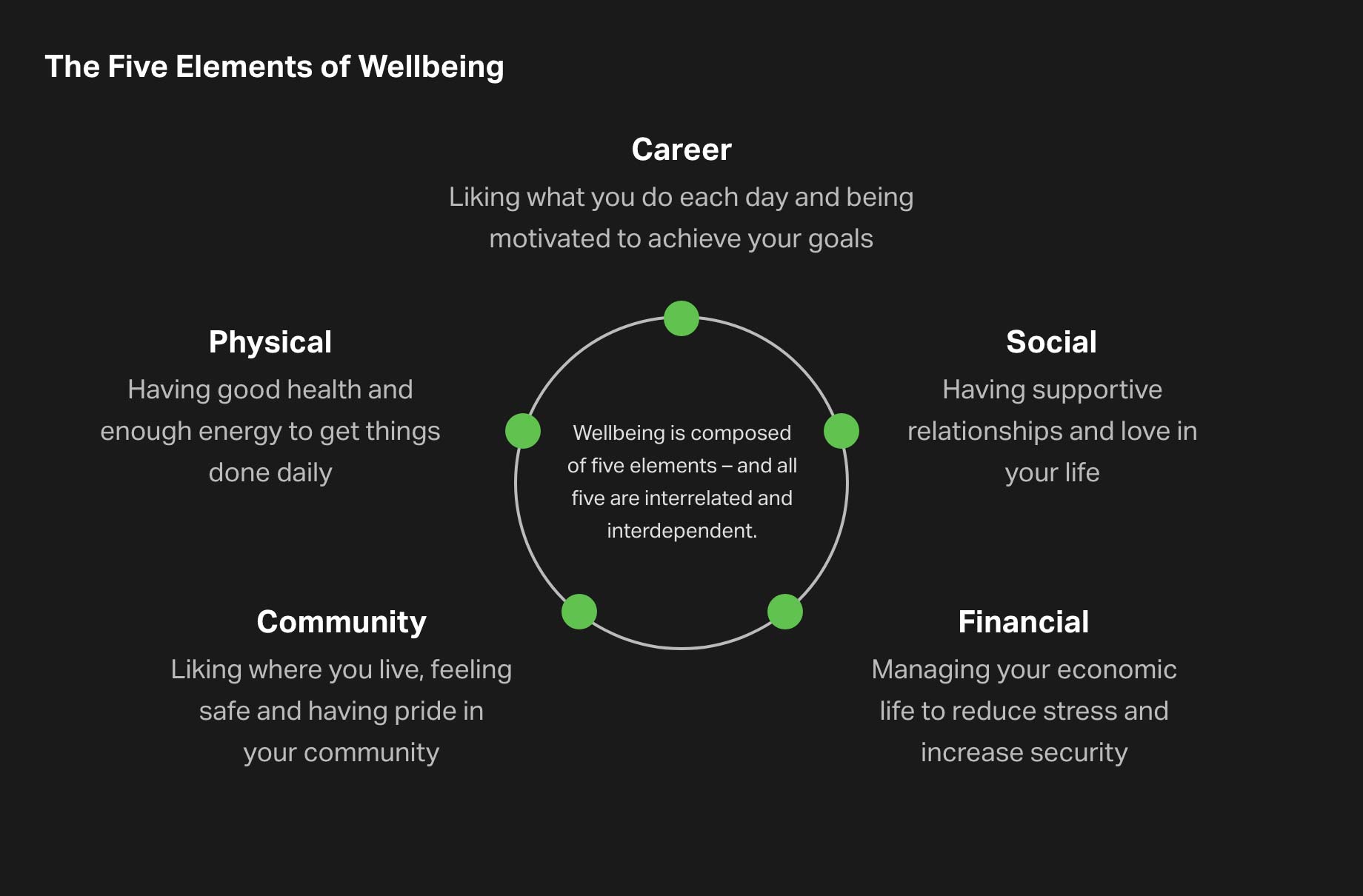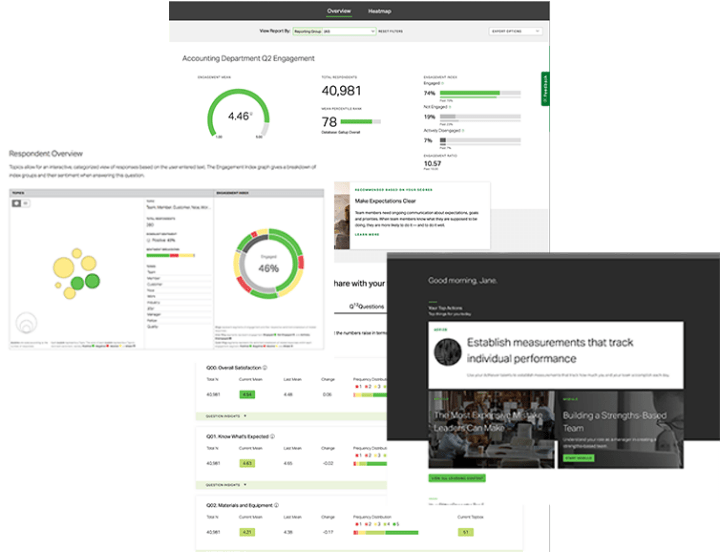
How to Prevent Employee Burnout
- What Is Workplace Burnout?
- What Are the Symptoms and Signs of Burnout?
- What Causes Burnout?
- Why Do You Need to Worry About Employee Burnout?
- How to Overcome Burnout
- How to Help Employees Fight Burnout
- What Can Managers Do to Help Prevent Employee Burnout?
- How Can Companies Reduce Employee Stress at Work?
- Why Is Work-Life Balance Important?
- The Negative Effects of Micromanagement
01 What Is Workplace Burnout?
The pressure to address job burnout became so intense in 2019 that the World Health Organization declared burnout an occupational phenomenon in the 11th revision of the International Classification of Diseases.
The World Health Organization offers this burnout definition: "a syndrome conceptualized as resulting from chronic workplace stress that has not been successfully managed."


02 What Are the Symptoms and Signs of Burnout?
According to the World Health Organization, signs of burnout at work include people feeling:
- depleted or exhausted
- mentally distant from their job or negative feelings or cynicism about their job
- reduced professional efficacy
Work burnout diminishes employees' desires to learn and grow. When employees are experiencing these work burnout symptoms, most of their energy and mental focus is on daily survival, not developing for the future.
03 What Causes Burnout?
The Top Five Causes of Burnout
There is little doubt that employee burnout is a symptom of modern workplaces that are increasingly fast-paced, complex and demanding. At work, many employees feel overwhelmed by competing demands and conflicting expectations. And technology -- especially mobile technology -- has blurred the lines between home life and work life.
Gallup research reveals the five factors that correlate most highly with employee burnout.
Unfair treatment at work
When employees strongly agree that they are often treated unfairly at work, they are more likely to experience a high level of burnout. Unfair treatment can include all kinds of workplace issues, from bias, favoritism and mistreatment by a coworker to inconsistently applied compensation or corporate policies.
When employees do not trust their manager, teammates or executive leadership, the psychological bond that makes work meaningful breaks. Conversely, when employees are treated fairly and feel respected, strong relationships form quickly, and employees are more resilient.
Unmanageable workload
Employees who strongly agree that they always have too much to do are more likely to say they experience burnout very often or always at work.
Even high-performing employees can quickly shift from optimistic to hopeless when they're struggling with unmanageable performance goals and expectations due to a lack of workload management.
Feeling overworked or having too much to do can take a variety of forms. Some people think about the long hours they work, while others are affected more by the many tasks they have to complete or the difficulty of the work.
Gallup analytics show that the number of hours people work each week does matter. The occupational burnout risk increases greatly when employees exceed an average of 50 hours per week and escalates even more substantially at 60 hours per week.
But how people experience their workload has a stronger influence on stress and burnout. For instance, employees who are engaged and have job flexibility tend to work more hours each week than the average employee, while reporting higher wellbeing.
But when work feels burdensome, difficult to do well or endless, employees can feel suffocated, regardless of how few or many hours they work.
Unclear communication from managers
When managers don't provide employees with the information they need to do their job effectively, work becomes difficult and frustrating.
Managers should explain role expectations, partnerships, processes and the impact of the employee's work.
When performance expectations and accountability are inconsistent or unclear, employees can become frustrated and exhausted, just by trying to figure out what their manager wants from them.
The best managers regularly discuss responsibilities, priorities, performance goals and expectations with their employees, and they collaborate with their team members to ensure that expectations are clear and aligned with team goals.
Great managers proactively share information, ask questions and encourage employees to share their thoughts.
Lack of manager support
Manager support is central to preventing burnout. Manager support provides a psychological buffer, so employees know that their manager has their back -- even when challenges arise or something goes wrong.
Supportive managers are there for their team members, listening to their needs and encouraging them. They help their employees prepare and develop.
In contrast, a negligent, absent or condescending manager leaves employees feeling uninformed, alone and defensive.
Unreasonable time pressure
Unreasonable deadlines and pressure can create a snowball effect: When employees miss one overly aggressive deadline, they fall behind on the next thing they are scheduled to do.
Notably, individuals handle time pressure differently. Employees who are a natural fit for a role tend to work more efficiently and sustain high performance for longer periods.
They also have more positive daily work experiences and handle stress at work more effectively when under time pressure than employees who are not a natural fit for the job.
In contrast, an effective way to create inefficiencies and increase stress is to ask someone to repeatedly do something they're not good at. Unreasonable time constraints often are imposed by people who do not know how long it takes to deliver high-quality work or great customer service.
Leaders must ensure that their role expectations and performance standards are fair and inspire excellence. And when employees step up to work overtime or accomplish tasks under tight deadlines, leaders should recognize their willingness to go the extra mile.
04 Why Do You Need to Worry About Employee Burnout?
Burnout is not just an inconvenience -- poor wellbeing affects your organization's bottom line through lower productivity, higher turnover, higher absenteeism and higher medical costs (due to preventable conditions) and can cost organizations 15%-20% of total payroll in voluntary turnover costs, on average, due to burnout.
The long-term effects of individual employees experiencing burnout? They take more sick days, feel less confident in their performance and are more likely to actively seek another job. Thriving employees fuel a thriving workplace -- and when employees are struggling, experiencing negative emotions or feeling burned out, your organization can suffer.
05 How to Overcome Burnout
So now you may be asking: What are the best solutions for workplace stress and burnout? Gallup's breakthrough discovery in this research is that managers are largely responsible for the conditions most likely to cause or prevent burnout.
The most immediate way to reduce employee burnout at your organization is for managers and employees to discuss the factors of burnout that are most relevant to the employee.
However, managers can't do it all on their own.
Various sources and situations -- leaders, managers, teams, workspaces, systems and structures -- cause burnout and affect it in different ways. Consequently, organizations must strategically focus on three areas when dealing with burnout at work.
1. Make wellbeing part of your culture.
Organizational culture -- the norms that define "why we exist," "what we believe in" and "how we do things" -- dictates how employees treat each other and experience the workplace.
When an organization makes workplace wellness a priority of its culture and provides resources for employees to live healthier lives, they take better care of themselves.
Employees encourage one another to live a healthy, meaningful and productive work life. They support each other in pursuing their ideal work-life balance -- whether that means working reasonable hours, taking advantage of a flexible work environment or enjoying their vacation time -- and they collectively model making healthy choices.
When wellbeing is a priority, managing burnout is an imperative. In contrast, when wellbeing is an HR-driven nice-to-have rather than the norm modeled across the organization, the workplace culture can perpetuate burnout.
The perks that HR offers for physical and financial health mean little when the other ways you do business advance work outcomes at the expense of everything else.
If an organization's culture promotes working excessively long hours, working during personal time and generally putting work ahead of family, those burnout-inducing habits that lead to employees being tired after work are going to be difficult to break.
Similarly, a command-and-control culture in which leaders encourage managers to give orders and meet performance expectations at all costs creates burnout risks related to feeling disrespected, unsupported and underappreciated.
What should wellbeing look like to employees?
Gallup's research has found five essential elements that differentiate thriving lives from those that are struggling or suffering. The elements are interrelated -- improving one element helps elevate the others. Organizations can act on all five.

2. Equip your managers to prevent worker burnout.
Managers are responsible for generating positive employee experiences and learning how to reduce stress at work for employees.
It's their duty to set clear expectations, remove barriers, facilitate collaboration and ensure that employees feel fully supported to do their best work. When they do, managers can reverse burnout and prevent further burnout before it starts.
Ultimately, managers greatly influence how employees feel about their job.

Educate Managers About Burnout
Leaders are responsible for empowering managers with the necessary development and resources to create a successful work environment.
In fact, this should be leaders' top priority for addressing burnout.
Managers are your best solution for burnout when they take time to learn the causes of burnout and are open to changing how they manage their teams. Taking ownership of their role in preventing burnout shows they are fully committed to helping every employee excel.
Managers who are intentional about reducing burnout and increasing engagement set the stage for a high-performance culture.
Take Action:
- Determine which burnout factors are most applicable to your team and discuss them with team members on an ongoing basis.
- Help managers examine how their habits, communications and management style could be causing or mitigating burnout.
- Incorporate burnout-related conversations into meetings and gatherings where managers can reflect on common scenarios and share best practices with peers.
Position Managers to Focus on Their People
People manager jobs tend to include lots of management tasks that don't relate to leading and developing people, and these overloaded job descriptions are a big problem.
When managers are strapped with administrative responsibilities, how can they provide employees with necessary management support?
Leaders should review managers' job descriptions and role expectations, considering whether the expectations allow managers to prioritize people needs first.
For what percentage of a manager's time does their leader expect them to engage in ongoing coaching conversations with individuals? How long should they spend allocating and monitoring budgets, creating schedules and completing other management tasks?
Leaders should carefully look for competing priorities that make it difficult for managers to support and develop their team members. By eliminating or reassigning such tasks, leaders can liberate their managers to focus on their people.
Take Action:
- Audit systemic causes of burnout, such as poor planning, communication issues, resourcing challenges and competing responsibilities.
- Set the expectation that managers are responsible for the engagement, wellbeing and performance of their people.
- Help managers master the five coaching conversations that drive performance to build trust and create opportunities to listen well and provide management support to their team members.
- Make wellbeing and burnout risks regular topics of discussion during coaching conversations.
Hire Managers Who Are the Right Fit
Great managers are a natural fit for their job and are prepared to lead others.
Managers with innate leadership talents are wired to help employees feel energized to do their best and motivated to help their coworkers.
When you carefully choose great managers, they make habits of offering feedback, coaching and support and helping employees achieve the right balance between work and life. They naturally create a positive work environment that fosters engagement and high performance while reducing burnout.
Weak managers do the opposite: They contribute to inefficiencies and dysfunction, leading to a downward spiral in team performance.
Take Action:
- Develop a system for identifying great managers. What criteria and experiences indicate a candidate would be good at leading your teams?
- Give individual contributors opportunities to lead people and projects before deciding to make them managers.
- Carefully choose managers based on their people leadership talents, training, desire to manage others and proven success managing others.
- Give individual contributors a path to advancement that doesn't require them to be a manager.
Remember That Managers Suffer Too
Many employees who suffer from burnout are managers. Their jobs are chaotic, and they are constantly "stuck" between managing their employees and fulfilling requests from their boss.
Managers report more stress and signs of burnout, worse work-life balance, and worse physical wellbeing than the individual contributors on the teams they lead.
A closer look at the manager experience illuminates why managers are at an even higher risk of burnout than their boss and those they manage. Among the biggest challenges of the job are unclear performance expectations, large amounts of work, distractions, stress, competing priorities and performance challenges.
How can we expect managers to build a work environment of high engagement and wellbeing when they are more burned out than the people they manage?
Take Action:
- Give a realistic job preview to people considering a management role so they know what to expect.
- Teach managers to identify issues that drain them and how to make a plan for getting back on track.
- Check in regularly. Ensure managers feel fully supported and have what they need to manage their work, stress and people.
- -Unclear expectations
- -Heavy workload and distractions
- -Job stress and frustrations
- -Less focus on their strengths
- -Frustrating performance reviews
- +Voice and involvement in decision-making
- +Autonomy and control over their work
- +Collaborative work environment
- +Opportunities for development and career advancement
- +Motivating pay incentives
3. Design your employee experience to reduce burnout.
Organizations can systematically target burnout by improving their employee experience. The employee experience encompasses the entire journey an employee takes with their organization.
It includes all the interactions an employee has with the organization throughout the employee life cycle. The life cycle is composed of seven critical stages during which organizations have the most influence on the employee experience, from their applicant experience to when they exit the organization.
The employee experience also includes relatively constant aspects that are shaped by employees' relationships with their manager, the clarity of their role, the value they bring to their team, their workspace and their wellbeing.
These key experiences shape organizational culture.


06 How to Recover From Burnout
Burnout recovery requires manager and organizational alignment -- because employees are less likely to experience burnout when their holistic workplace needs are met.
Start by ensuring your employees feel supported and recognized for their work and connected to their team and manager.
Just as important, employees need to have clear, meaningful goals that are within their power to attain, and they should have a positive, comfortable work environment. When people are surrounded by a supportive manager, team and environment that meet their needs, their engagement soars, and they naturally flourish and perform well over the long term.
- Make managers responsible for addressing burnout signs.
- Set role expectations and structure jobs to make work more manageable and engaging. Ensure that workload and time pressures are reasonable.
- Encourage teamwork and shared accountability. When people work together and support one another, the workload gets lighter and challenges seem smaller.
- Design ideal environments that are as comfortable and inviting as possible. Employees need spaces for both gathering and getting away from the buzz.
- Make wellbeing part of your culture. Incorporate the five elements of wellbeing into regular conversations and work practices.

07 What Can Managers Do to Help Prevent Employee Burnout?
The root causes of burnout are within managers' span of control.
They cover some of managers' most important job responsibilities, including fostering positive employee experiences, learning how to reduce stress at work, setting clear expectations, communicating effectively, removing barriers and ensuring that employees feel supported.
How employees feel about their job is largely on the manager's shoulders. That said, to be fair to managers, the root causes are big, broad issues to tackle.
Fortunately, research provides some clear-cut recommendations to help managers dig deeper into the antecedents of burnout.
Beyond personally addressing and helping leadership develop solutions for the five root causes, managers should focus on these action items that reflect the five next-highest correlates of burnout.
.
1. Listen to Work-Related Problems
Listening may seem like an obvious solution, and many managers may feel as though they are doing well in this area. Yet, too few managers make frequent employee check-ins and ongoing conversations a high priority.
To help combat burnout, employees need to believe that their manager will address their problems, and they need to feel like their manager genuinely cares about them as people. The best managers demonstrate that they care by investing in employees through awareness, time and attention.
They know employees as individuals, celebrate achievements, have performance conversations, conduct formal reviews and, above all, respect their employees.
2. Encourage Teamwork
Coworkers provide an essential line of emotional support for employees who are struggling. Coworkers often understand how to deal with stress at work better than managers do.
But this doesn't mean managers should sit on the sidelines.
Just the opposite -- it's the manager's responsibility to create a work environment where teamwork thrives, people help one another and everyone has someone at work who is willing to listen.
Great managers build committed, highly cohesive teams with deep bonds. They encourage teamwork and initiate effective, frequent communication and help to align their team members. They also hold individuals accountable for their role in building quality partnerships.
3. Make Everyone's Opinion Count
Managers should actively solicit employees' opinions and ideas. When employees believe their opinions are welcome and make a difference, they feel important and included, and they begin taking more responsibility for their performance.
This sense of ownership reduces burnout because it gives employees a feeling of control over their work -- rather than feeling like work is something that happens to them.
Exceptional managers initiate open dialogue and ask for employees' input.
They encourage creativity and new ideas that can positively influence business results. They also provide honest feedback on employees' ideas -- advocating for good ones and addressing unfeasible ones.
4. Make Work Purposeful
Employees are significantly less likely to be burned out when they can connect their work to their company's mission or purpose in a way that makes their job feel important.
People do not want to work just for a paycheck; they want to find meaning in what they do.
Managers must do more than point to the mission statement on the wall -- they must show how their employees' contributions make a difference.
Reinforcing how employees' work changes their organization, industry or world is especially important for preventing or reducing burnout among millennials, who particularly crave purpose-driven, mission-oriented work.
The most effective managers cultivate a sense of purpose among employees by clarifying the organization's mission and helping employees discover how their role and daily tasks contribute to fulfilling that mission.
5. Focus on Strengths-Based Feedback and Development
When people have the opportunity to tap into their strengths, they are more engaged, more effective, less stressed and more focused on doing their best work -- rather than seeing their job as a burden.
Gallup analytics consistently prove that managers get the best performance from their team members when they identify what their people do best, praise them for it, and guide them into tasks and partnerships that maximize their natural talents.
World-class managers know where their employees excel and look for career opportunities that empower employees to use their talents and strengths.
Managers position their team members so they are engaged as individuals and provide value to the organization.

08 How Can Companies Reduce Employee Stress at Work?
When prioritizing burnout-related strategies, organizations should put a strong emphasis on manager development. Our research consistently shows that no one has a more powerful influence on employee burnout than a direct manager.
However, issues related to employees' work environment -- demands put on them and the spaces and structures that they work within -- also affect their risk of burnout.
Here are five ways that employers can improve systems, structures and workspaces for the benefit of their employees.
.
1. Place Performance Expectations and Metrics Within Employees' Control
Performance metrics tell employees and their managers how they're doing. Naturally, they also influence performance conversations and incentive pay.
When employees feel their work is being evaluated using metrics they can't control, anxiety results. It feels pointless to work hard when external factors can easily obscure one's best efforts. And metrics -- which should be a way to track success and show improvement -- become a source of chronic despair and frustration.
2. Reduce Noise and Interruptions
Workplace studies consistently have shown that when employees are frequently interrupted, the quantity and quality of their work suffers -- as does their wellbeing.
Organizations can reduce accelerators of burnout in the work environment by providing quiet, comfortable workspaces where employees can easily immerse themselves in their individual work. Organizations should be intentional and strategic when creating the workspaces that employees will use for collaboration and meetings.
Gallup research shows that the three office features employees want most are privacy when they need it, personal workspace and their own office.
3. Design Jobs to Allow for Autonomy
Job autonomy means having flexibility and control over how work gets done. It is a strong enabler of high performance and can take on many forms, from personal choice in what to work on and how much time to spend on a task to choice of work schedules and locations.
Jobs designed to enhance autonomy do so by providing clear expectations for outcomes and boundaries. They also empower employees with an appropriate level of decision-making authority over the types of work they do and the processes they use to achieve their goals and develop professionally.
Job seekers often list "interesting work" and "opportunities to learn and grow" as top reasons for wanting to join an organization. They also want flexible jobs -- organizations that give employees a choice about where and when to work.
Acknowledging the importance of work-life balance and allowing employees to have authority and flexibility in the workplace can help them discover their ideal work conditions. That is why flexibility greatly affects employees' wellbeing and engagement and, therefore, their level of burnout.
Although providing autonomy is important, organizations need to find a balance between too much and too little freedom.
Too much autonomy can cause excessive ambiguity and strain partnerships, creating a risk of burnout.
4. Audit Your Workspace Lighting
Suitable lighting in a work environment is important for maximizing productivity and promoting positive emotions in the workplace.
Natural lighting has been shown to promote calming, peaceful moods and reduce stress. A lack of natural lighting or the presence of poor, artificial lighting can cause negative moods and depression among employees.
Individuals have their own preferences for which work environments suit them best. Employers should find out what is ideal for the majority of their team members, while providing alternatives to meet personal preferences.
5. Provide Collaboration Spaces That Are Inviting
When employees have to wait in line for conference rooms, huddle in private offices or work against background noise, collaboration can become stressful.
An inviting collaboration space should include features such as room to move around, a whiteboard, videoconference capabilities and acoustics that allow everyone to be heard clearly.
Notably, when employees are not collaborating, they want privacy and a workspace they can call their own.

09 Why Is Work-Life Balance Important?
Work-life balance is a matter of wellbeing. Organizations must make wellbeing a priority in their workplace culture and provide ways for employees to improve in their own lives.
When wellbeing is a priority, preventing and reducing burnout is an imperative.
- Use Gallup's five elements of wellbeing as a science-based structure for all of your benefits and wellbeing programs and offerings.
- Align leaders on why a culture of wellbeing matters.
- Give employees ongoing access to advice and best practices. Organizations should develop a network of wellbeing "coaches," and managers should encourage their team members to use the available resources.
- Help your team manage stress, anxiety and burnout by encouraging them to keep their wellbeing top of mind.
- Recognize and reward wellbeing achievements.
10 The Negative Effects of Micromanagement
Reduce micromanagement at work by providing as much job autonomy and flexibility as possible.
Job autonomy means having flexibility and control over how work gets done. It is a strong enabler of high performance and can take on many forms, from personal choice in what to work on and how much time to spend on a task to choice of work schedules and locations.

Jobs designed to avoid the dangers of micromanagement and enhance autonomy do so by providing clear expectations for outcomes and boundaries. They simultaneously empower employees with an appropriate level of decision-making authority over the types of work they do and the processes they use to achieve their goals and develop professionally.

Although providing autonomy is important, organizations need to find a balance between too much and too little freedom. Too much autonomy can cause excessive ambiguity and strain partnerships, creating a risk of burnout that leaves employees exhausted from work.

Employees who work independently and flexibly still need managers who ensure that role expectations are clear, check in often and partner with their employees on goal setting.
Working remotely, for example, can result in unclear expectations and isolationism if remote employees are mismanaged.
Leaders and managers should align on the right amount of job autonomy and flexibility when designing or redesigning a job.
How Gallup Can Help
Employee burnout and wellbeing are intermingled. When your employees' wellbeing is thriving, your organization directly benefits -- employees take fewer sick days, deliver higher performance, and have lower rates of burnout and turnover.
Learn more about how we can help you measure and improve employee wellbeing.
Burnout Affects Employee Engagement
Employee burnout eats away at employee productivity. The best workplaces care for their employees and then position employee engagement as the catalyst for improving important business outcomes. Start considering your organization's employee engagement strategies -- today.
